
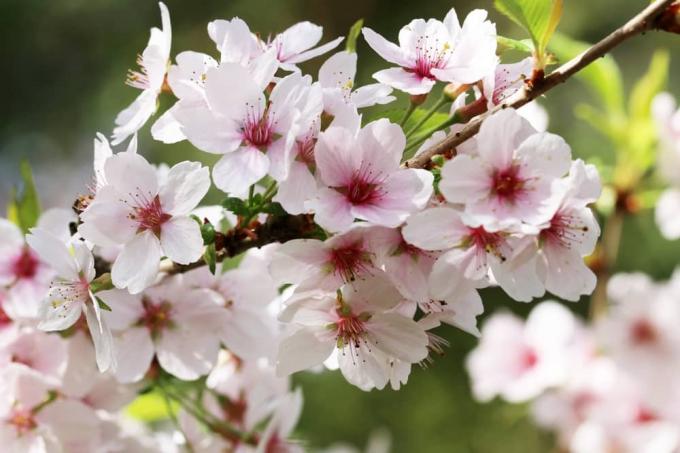
Table of contents
- Pink flowering trees from A to K
- Pink flowering trees from P to T
- White flowering trees from A to H
- White flowering trees from S to Z
- Yellow flowering trees
Whether it's a rustic cottage garden in which everything blooms in a jumble, or a well thought-out one bed arrangement, the color of the tree blossom plays an important role in the visual appearance of the garden Role. Different flower colors not only transform green hedges and shrubs into lively rear plantings, but also emphasize each other with targeted contrasts. Pink, white or yellow, here come the most beautiful flowering trees.
Pink flowering trees from A to K
Mountain cherry/ scarlet cherry(Prunus sargentii)
- Flowering time: April
- Location: sunny to semi-shady
- Growth height: 0.6 to 1 m
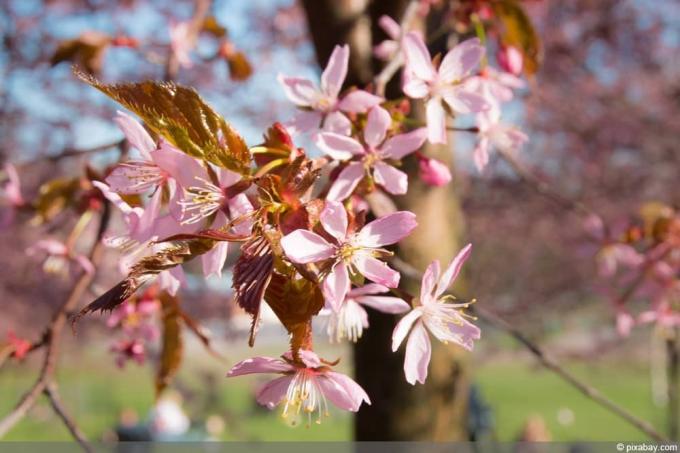
The mountain cherry provides colorful variety in the garden, whereby its blossoms are always in striking contrast to the leaf colour. In the course of the year, the tree brings out almost all reddish color nuances. When it blooms in spring, the bright pink flowers stand out against the bronze-colored foliage. But the tree is also an eye-catcher in autumn. Even late in the year, the scarlet cherry presents itself with an orange foliage. The cherries themselves are also tempting to eat from a purely visual point of view. If the glossy dark red appears appetizing, the taste turns out to be bitter.
blood plum 'Nigra'(Prunus cerasifera)
- Flowering time: April
- Location: sunny to semi-shady
- Growth height: 0.3 to 0.4 m
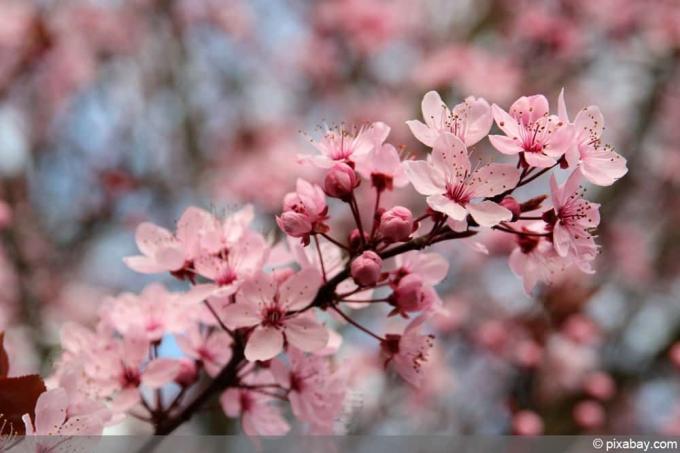
Completely red, the blood plum attracts everyone's attention. Not only the flowers and leaves are striking because of the pink or dark red color. Even the twigs stand out clearly from other plants with their red-brown to black color.
Copper pear pear / pear pear(Amelanchier lamarckii)
- Flowering time: March
- Location: sunny to semi-shady
- Growth height: 0.3 to 0.4 m

The pure white flowers of the service pear are beautiful to look at. They are actually only the forerunners of the true treasure of the tree. Amelanchier lamarckii produces deliciously sweet pears in summer. Where does the name come from? The tree probably owes this to its magnificent foliage coloration in autumn.
Canadian Judas Tree(Cercis canadensis 'Lavender Twist')
- Flowering time: April
- Location: sunny
- Growth height: 0.2 to 0.4 m
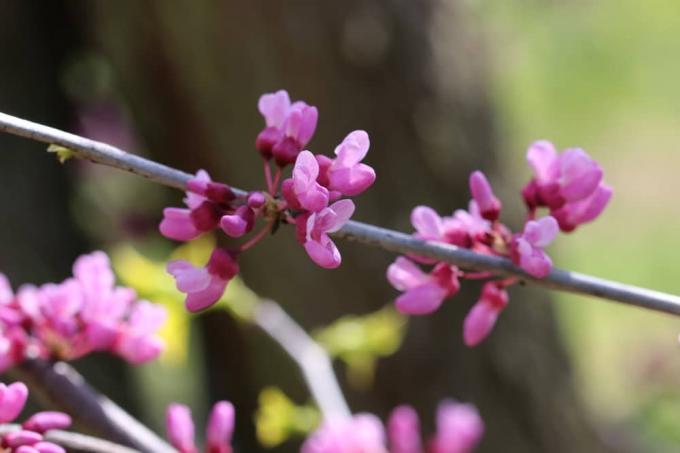
At the sight of the blossoms of the Judas tree, one's heart rises in two senses. It is interesting to see that the heart-shaped flowers unfold directly on the branches. While some trees refuse to flower after a harsh winter, the Judas tree is used to the cold temperatures of its country of origin. Down to -25°C cannot harm it. Another advantage of the tree is that its leaves glow reddish throughout the summer and well into the fall.
Pink flowering trees from P to T
Peach 'Red Haven'(Prunus persica)
- Flowering time: April
- Location: sunny to semi-shady
- Growth height: 0.2 to 0.4 m
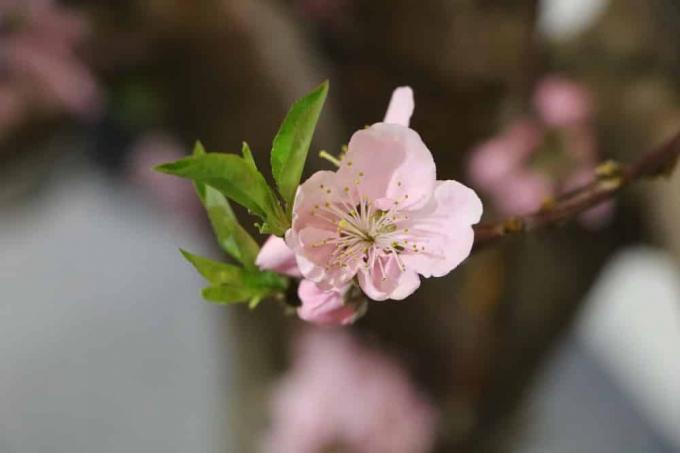
Here, too, the question arises as to what is more appealing: the delicate pink flowers or the delicious fruits that result from them. Insects clearly prefer the flower, around which they flock in droves. The pink blossoming tree also benefits and rewards the diligence of the insects with an even more lush blossom in the following year. The gardener can also contribute to this by planting another tree in the immediate vicinity.
Snow cherry/ winter cherry(Prunus subhirtella f. autumnalis)
- Flowering time: November
- Location: sunny
- Growth height: 0.3 to 0.5 m
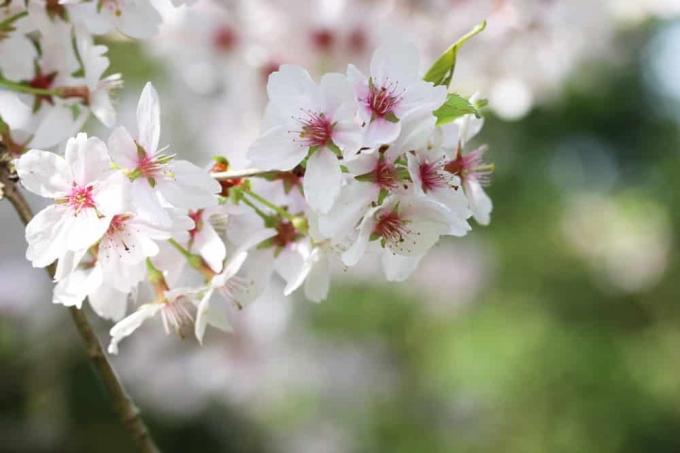
If you still want to add colorful accents to your garden in late autumn, the snow cherry is the best choice. Even if the tree is no longer in green foliage at this time, its pink flowers shine even on cloudy November days. An outsider among the blossoming trees? Hardly, because when the other plants sprout in spring, the winter cherry is also part of the party and impresses with a pink colored second bloom.
silk tree(Albizia julibrissin)
- Flowering time: July
- Location: sunny
- Growth height: 0.3 to 0.6 m
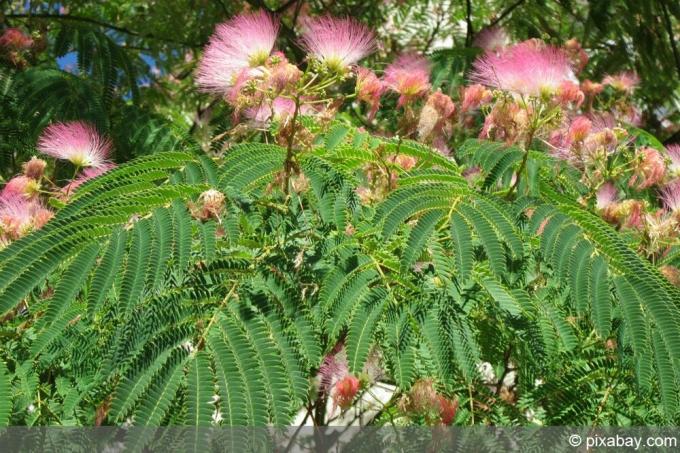
With the brush-like shape of the flower, the silk tree proves to be an eye-catcher in the garden. The deciduous tree from Asia has an unusual appearance.
Tip:
Winter protection is required for the first five years.
Tulip magnolia(Magnolia soulangiana)
- Flowering time: April
- Location: sunny and sheltered
- Growth height: 0.25 to 0.45 m
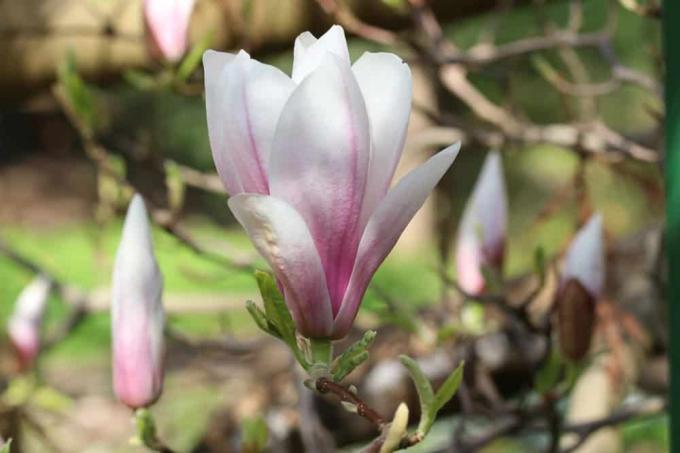
The tulip magnolia also opens its buds in spring to coincide with the flowering time of the cut flower of the same name. Her wide crown makes a lot more impression in comparison. After flowering, the tree appears in green foliage.
White flowering trees from A to H
American yellowwood(Cladrastis lutea)
- Flowering time: June
- Location: sunny to semi-shady, protected in winter
- Growth height: 0.6 to 1 m
Although the flowers of the American yellowwood shine in pure white, the wood still provides color accents in the garden. The green pinnate leaves on the yellow twigs are characteristic of Cladrastis lutea.
pear quince(Cydonia)
- Flowering time: April
- Location: full sun
- Growth height: 3.5 to 5.5 m
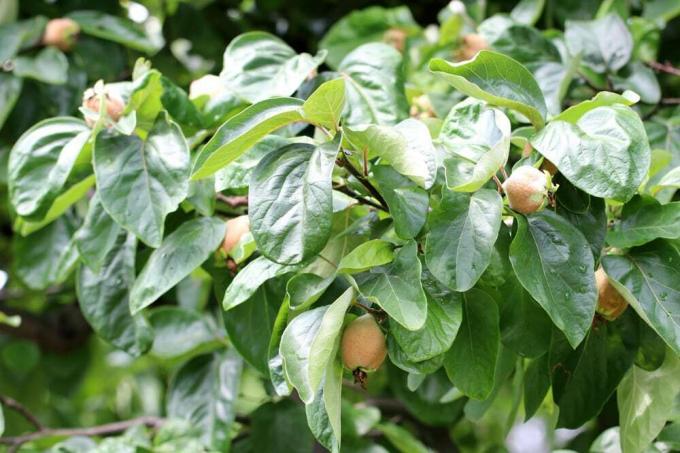
The quince fruits that Cydonia produces are thought to be a combination of apple and pear. It also has a positive effect on the quantity of beautiful white flowers of pear quince growing in the company of apple quince.
Flower ash/ ornamental ash(Fraxinus ornus)
- Flowering time: May
- Location: sunny to semi-shady
- Growth height: 0.8 to 1 m

The flower ash comes from southern Europe, but now also delights numerous insect species in the north with its fragrant white flowers. This usually unfolds in May and lasts into June. If the temperatures are consistently mild, however, the flower will appear as early as April. Finally, in autumn, the gardener can look forward to decoratively colored, yellow foliage.
Bodnant Winter Snowball 'Dawn'(Viburnum x bodnantense)
- Flowering time: November
- Location: sunny to semi-shady
- Growth height: 0.25 to 0.3 m
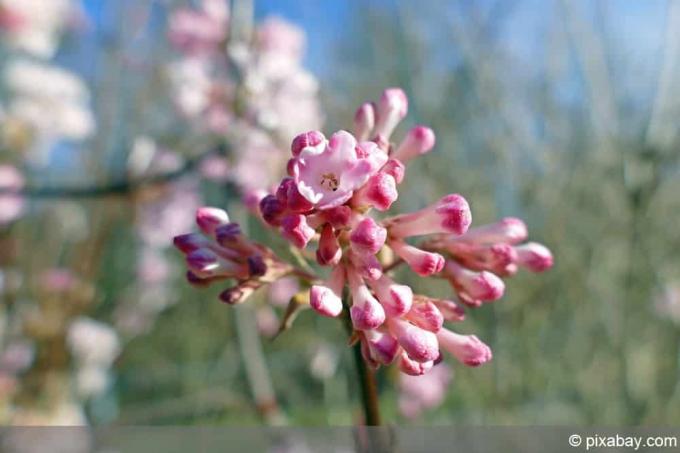
The color spectacle of the Bodnant winter snowball does not end with the shedding of the red leaves in autumn. White-pink flowers adorn its branches all winter long from November to April.
Real almond tree(Prunus dulcis)
- Flowering time: April
- Location: sunny, warm and sheltered
- Growth height: 0.3 to 0.5 m
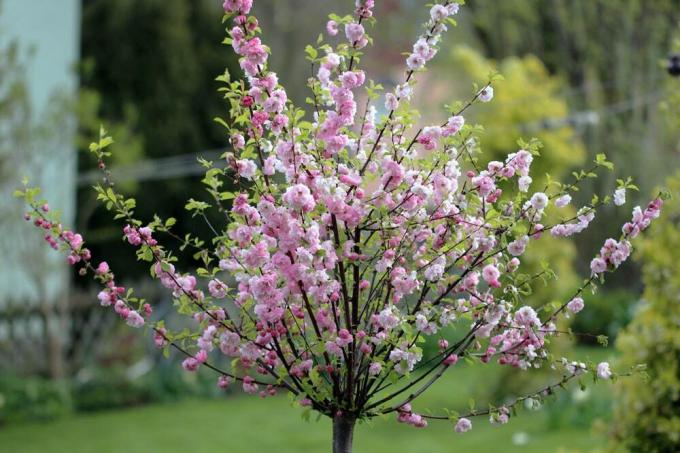
Attractive white flowers with a red center in the heart give the real almond tree Mediterranean charm. Thanks to its forest hardiness, it can preferably spend the winter outside.
Tip:
If you choose the varieties 'Tuono' or 'Supernova', you can even harvest edible almonds.
Hanging wild pear/ willow-leaf pear(Pirus salicifosia 'Pendula')
- Flowering time: April
- Location: full sun
- Growth height: 0.4 to 0.6 m

If the garden has little space, the hanging wild pear is the tree of choice. Thanks to their high pruning tolerance and leisurely growth, the gardener can adapt their size to their capacities. The silvery shimmering leaves are also visually impressive.
Tall White Pied Dogwood/ Pagoda Dogwood(Cornus controversa 'Variegata')
- Flowering time: June
- Location: sunny to shady, slightly acidic garden soil
- Growth height: 0.35 to 0.6 m
Unlike conventional dogwoods, Cornus controversa 'Variegata' comes as a small tree. What is nicer to look at? Its white flowers or the green and white leaves that turn reddish in autumn? With these properties, the tree impresses all year round.
White flowering trees from S to Z
snowdrop tree(Halesia monticola)
- Flowering time: April
- Location: sunny, warm and sheltered
- Growth height: 0.6 to 1.2 m
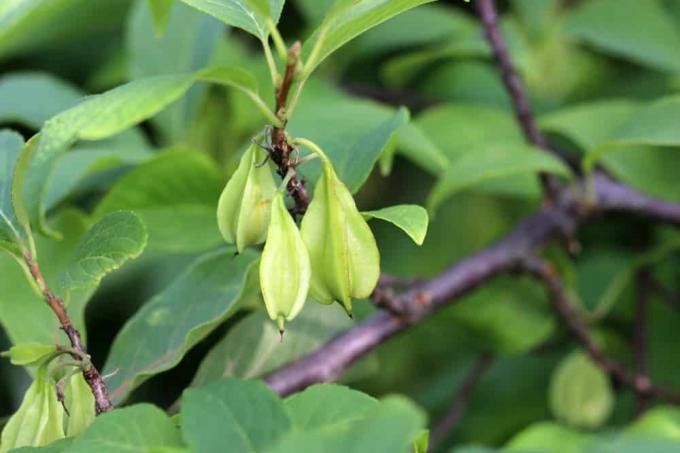
Nanu, did the heralds of spring stray onto the tree? At least the snowdrop tree, whose white blossoms look confusingly similar to the flowers, gives that impression. However, these do not withdraw their heads after a short time, but remain in mild weather until the end of May. Finally, in winter, fruits adorn the bare branches.
Stone linden/small-leaved linden(Tilia cordata)
- Flowering time: June
- Location: sunny to semi-shady
- Growth height: 1.5 to 3 m
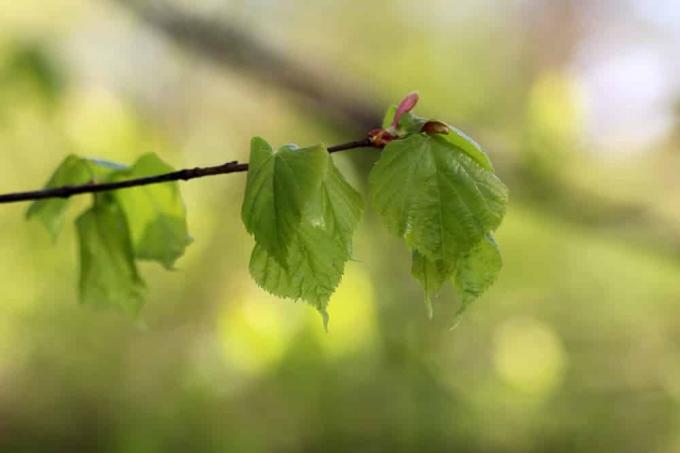
Insect lovers cannot avoid owning a lime tree in their own garden. Although the inconspicuous flowers are hidden in the green foliage, the beguiling scent of the tree attracts attention. Bees, bumblebees and butterflies can't resist.
handkerchief tree(Davidia involucrata vilmoriniana)
- Flowering time: May
- Location: sunny to semi-shady, sheltered
- Growth height: 0.6 to 0.8 m
Hach how romantic, at the sight of the bloom of Davidia involucrata vilmoriniana the observer wants to pull out the handkerchiefs. The up to 10 cm long flower impresses with an unmistakable look.
bird cherry(Prunus padus)
- Flowering time: April
- Location: sunny to shady
- Growth height: 0.6 to 1 m
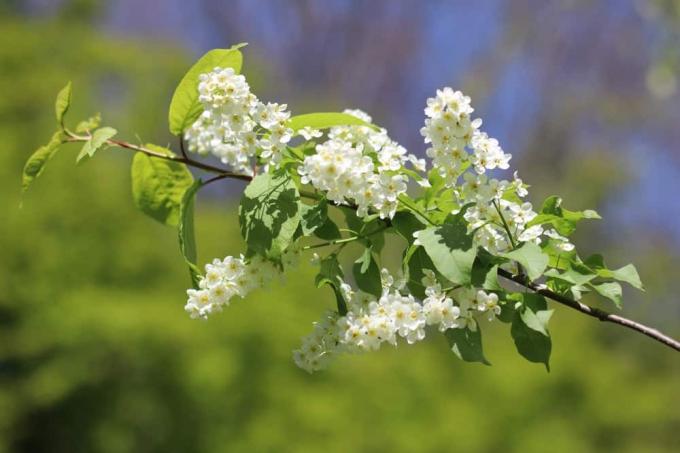
Although the blossoms of the bird cherry open in spring, their real benefits are revealed in the cold season. The tree is winter hardy and requires little light. At this time he adorns himself with small black berries.
Tip:
The best time to cut back is right after flowering.
trumpet tree(Catalpa bignonioides)
- Flowering time: June
- Location: sunny to semi-shady
- Growth height: 1 to 1.5 m
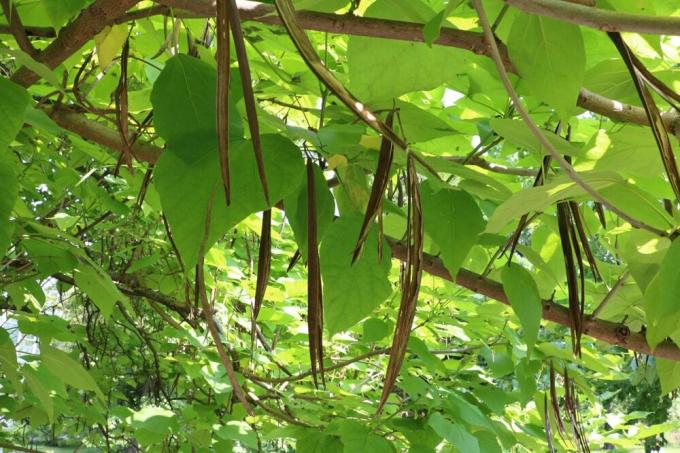
Because of the trumpet tree does not bloom. The original variety impresses with white flowers with a yellow throat.
rowanberry(Sorbus aucuparia)
- Flowering time: May
- Location: sunny to semi-shady
- Growth height: 0.6 to 1.2 m
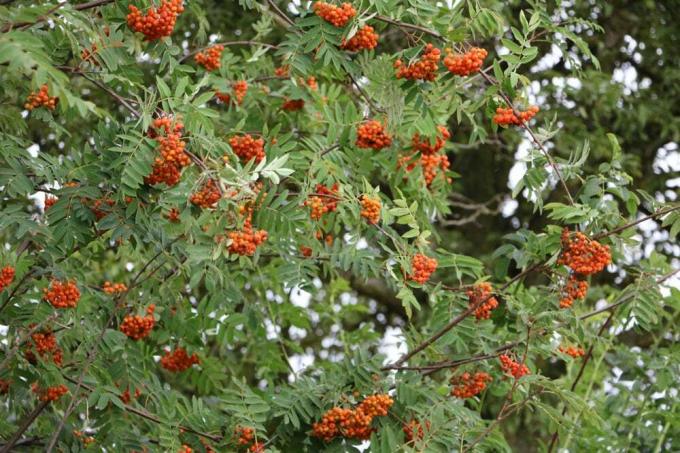
At the beginning of the year, the rowan trumps with large, white flowers. Later, orange fruits glow on their branches, attracting numerous birds.
Tip:
The rowanberries are not suitable for raw consumption, but can be made into jelly.
crabapple(penalty)
- Flowering time: May
- Location: sunny to semi-shady
- Growth height: 0.4 to 0.5 m
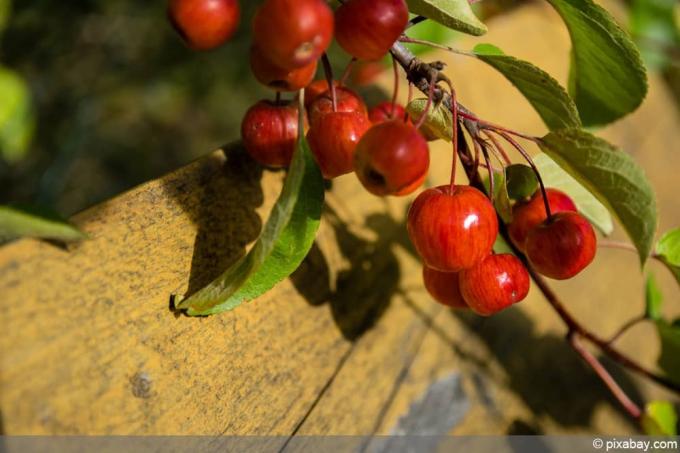
White flowers with a touch of pink. The easy-care ornamental apple comes from New Zealand.
Yellow flowering trees
cucumber magnolia(Magnolia acuminata)
- Flowering time: June
- Location: sunny and sheltered
- Growth height: 0.8 to 1.2 m
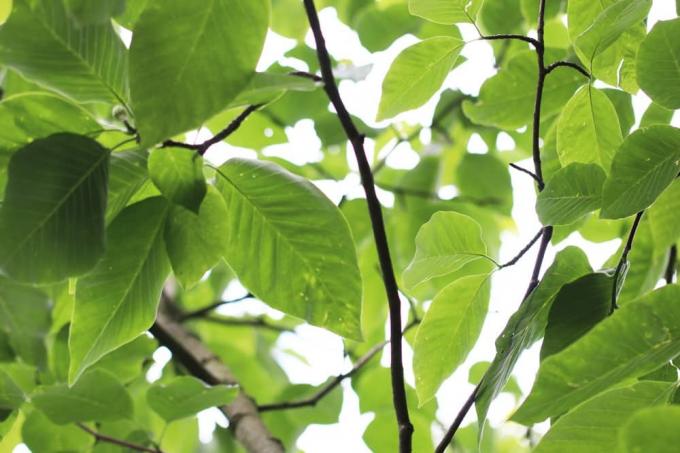
After the usual magnolias have faded, this tree comes into its own. But why actually cucumber magnolia? The name comes from the cucumber-like fruits in autumn.
cornel(Carnusmas)
- Flowering time: March
- Location: sunny to semi-shady
- Growth height: 0.3 to 0.5 m

The cornelian cherry blossoms only after several years, but patience is rewarded. When other trees are still in hibernation, the yellow flowers come out. These later turn into red berries.
tulip tree(Liriodendron tulipifera)
- Flowering time: May
- Location: sunny, warm and sheltered
- Growth height: 2 to 3.5 m
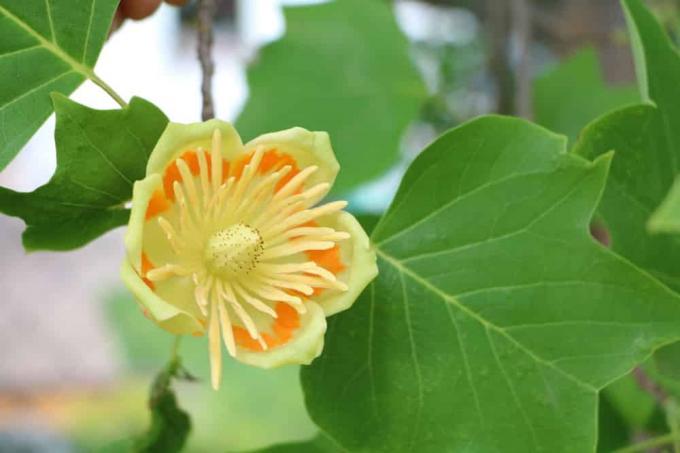
The tulip tree is suitable for large gardens because it takes up a lot of space. Due to its unusual flower shape, nobody will deny this claim.
 Home editorial office
Home editorial office
Learn more about Baumlexikon
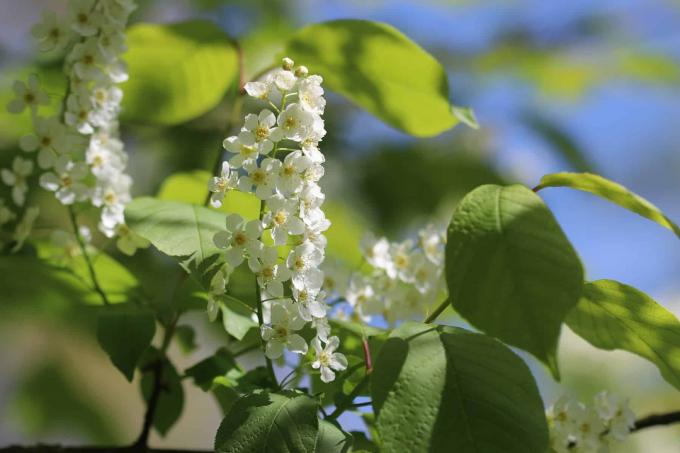
Bird cherry, Prunus padus: caring for, pruning & propagating
The bird cherry is a shrub or tree that is the ideal bee pasture in a natural garden. However, the plant should also be viewed with caution, as it is a poisonous plant for horses. Nevertheless, it is popular in the local colorful hedges.
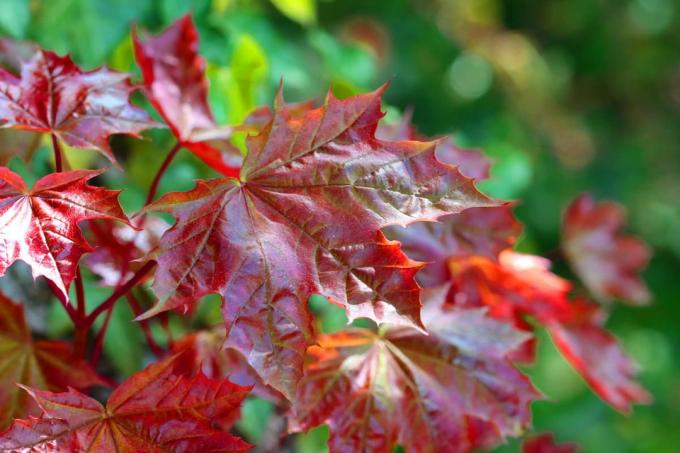
Red maple: 9 tips for caring for, cutting & overwintering
The red maple is one of the most impressive trees in Germany due to its unusual scarlet leaf colour. Here you can find out how to integrate this impressive plant into your garden and how to keep it healthy and vigorous.

Sycamore tree: Properly care for and cut sycamore trees
The plane tree (Platanus) has a high decorative value. In terms of care, it is mostly undemanding, which is why it is often chosen as a street tree. Nevertheless, there are a few details to be observed when it comes to care, as described in the home garden guide.

Birch locations: 5 important criteria
Birch trees are extremely frugal trees and are particularly eye-catching and decorative thanks to their light-colored bark. When choosing a location, however, a few factors should be considered in order to create optimal conditions for their growth and to protect the environment.

Cutting dwarf pine - instructions for the perfect cut
Dwarf pines can be pruned by thinning out, topiary or limbing. A bonsai design with needle and root pruning is also possible. So that the wood does not look unattractive after the pruning measure, a few rules of technology should be observed.

Is the vinegar tree poisonous? | Who is it dangerous for?
In ornamental gardens, the vinegar tree is an attractive eye-catcher due to its unusual flowers and the appealing autumn color of its feathered leaves. The red, upright fruit cobs (flowers) are responsible for the striking appearance. Despite everything, the vinegar tree is not an unproblematic tree.
